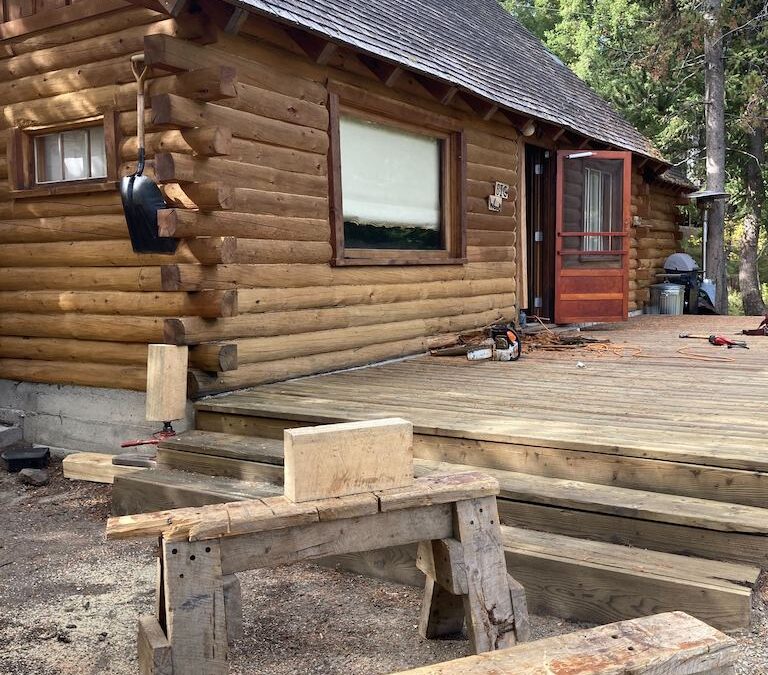How to extend the life of a Log Home
To extend the life of a log home and ensure its longevity, you can follow these best practices:
- Regular cleaning: Clean the logs annually or bi-annually to remove dust, dirt, pollen, and other debris. Use a soft brush or pressure washer on a low setting to avoid damaging the logs. Ensure the logs are completely dry after cleaning.
- Inspect and repair caulking and chinking: Check the caulking and chinking between the logs for any cracks or gaps. Repair or replace damaged caulking or chinking promptly to prevent water infiltration and air leaks.
- Maintain a proper drainage system: Ensure that the ground around your log home slopes away from the foundation to divert water away. Clean and maintain gutters and downspouts to prevent water from accumulating near the logs.
- Address moisture issues: Moisture is the primary enemy of log homes. Regularly inspect the logs for signs of moisture damage, such as rot, mold, or mildew. Address any leaks, plumbing issues, or excessive humidity inside the home promptly.
- Stain and seal the logs: Apply a high-quality wood stain or preservative to protect the logs from UV radiation, moisture, and pests. Follow the manufacturer’s instructions and reapply the stain as recommended. Do not use solid body paints or stains, as they do not allow the logs to breathe and dry out. Solid-body paints and stains trap moisture, which leads to rot. Examples of stains to use include Transformation Log and Timber (alkyd oil-based), Capture (water-based), Cascade (water-based), Transformation Siding and Trim (an emulsion of water and alkyd oil).
- Keep vegetation away: Trim back any vegetation, such as trees, shrubs, or vines, that may be touching or close to the log walls. This prevents moisture buildup and reduces the risk of pests or fungal growth.
- Pest control: Regularly inspect your log home for signs of pests like termites, carpenter ants, or wood-boring beetles. If you notice any infestation, consult with a professional exterminator for appropriate treatment.
- Regularly monitor and maintain the roof: A well-maintained roof is crucial for protecting the logs from water damage. Inspect the roof regularly and address any issues, such as missing or damaged shingles, flashing, or leaks.
- Maintain proper ventilation: Ensure that your log home has adequate ventilation to prevent excessive moisture buildup. Proper airflow helps in drying out any moisture that may accumulate within the logs.
- Periodic log inspection: Regularly inspect the logs for signs of decay, cracks, or damage. Promptly address any issues to prevent them from worsening and compromising the structural integrity of the home.
Remember, it’s essential to consult with professionals experienced in log home maintenance and restoration if you encounter significant issues or are unsure about any particular aspect of caring for your Log home.

